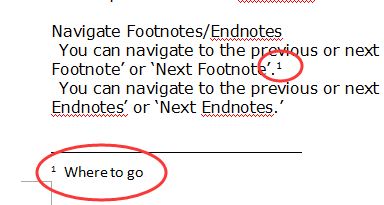

This is the same number or symbol as the "Footnote Anchor", but can be formatted differently for example, it might or might not be superscripted. The "Footnote Characters" is the number or symbol at the start of the "Footnote".The format of this character or number (font, size, superscripting, etc) is controlled by a Character Style (the second icon under Format / Styles and Formatting), named "Footnote Anchor". The "Footnote Anchor" is the number or symbol that occurs in the main text, typically superscripted, and often an automatically-generated number.Taking footnotes first, the main parts are these:

Endnotes work the same as footnotes, with "Footnote" changed to "Endnote" everywhere. Each part has a style that you can change, for example by using Format / Styles and Formatting. With the double makebox trick we set a zero width box with its contents sticking to its left, containing a box \normalparindent wide, with the contents shoved to the left.Formatting footnotes and endnotes is a bit complicated, because there are so many parts. You may want to try also \RaggedRight from the ragged2e package that allows for (rare) hyphenation in order to reduce the raggedness. The \raggedright command sets it to zero, so we override this later, and sets \rightskip to a stretchable space it also sets \parindent to zero, so I defined \normalparindent to remember its value. The parameter \leftskip is the distance from the global left margin to the actual left margin of the text. I added showframe just to make sure the specifications are respected Taking this as a model, here's what you may want: \documentclass The standard definition of \enoteformat is \parindent=1.8em


 0 kommentar(er)
0 kommentar(er)
